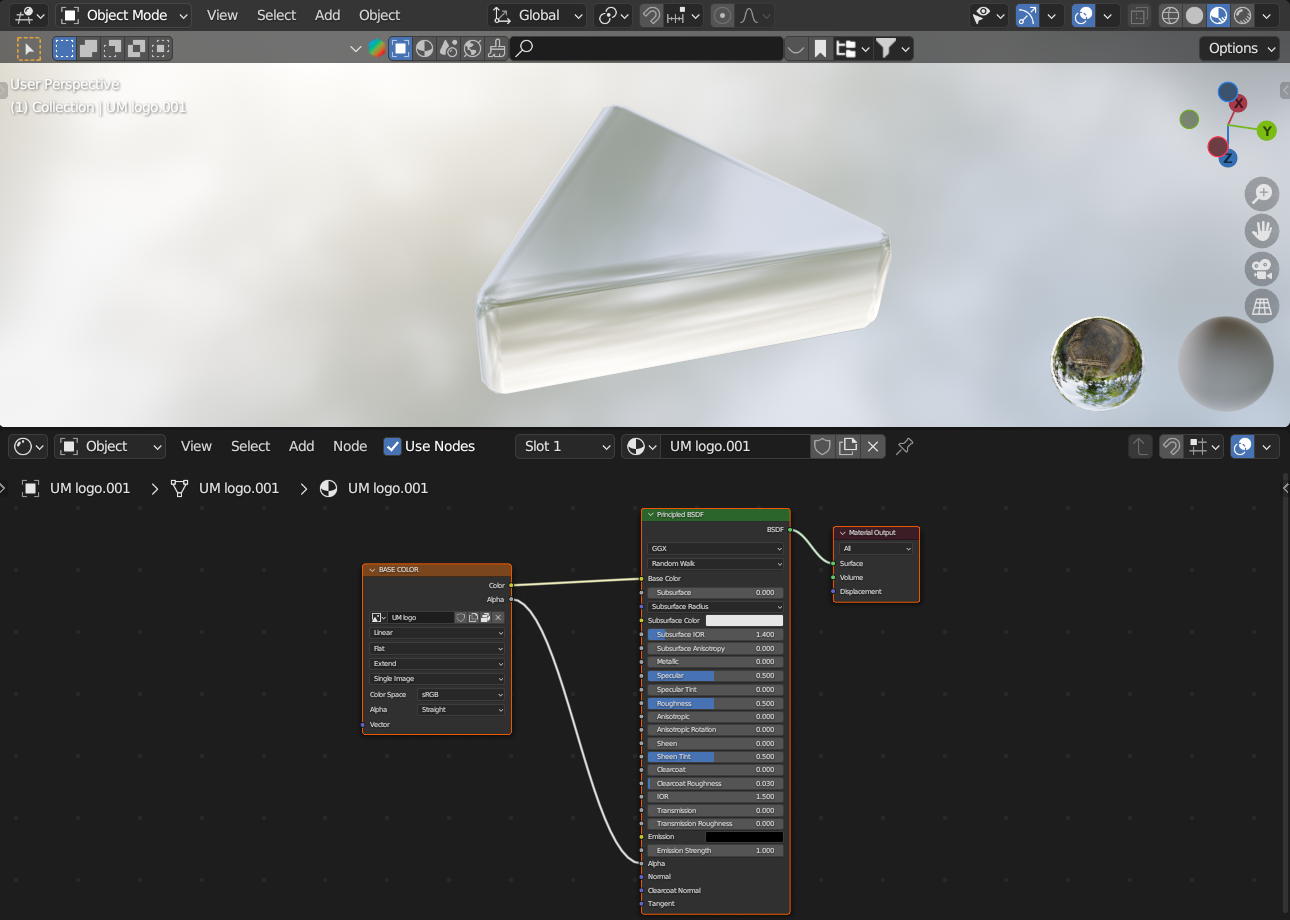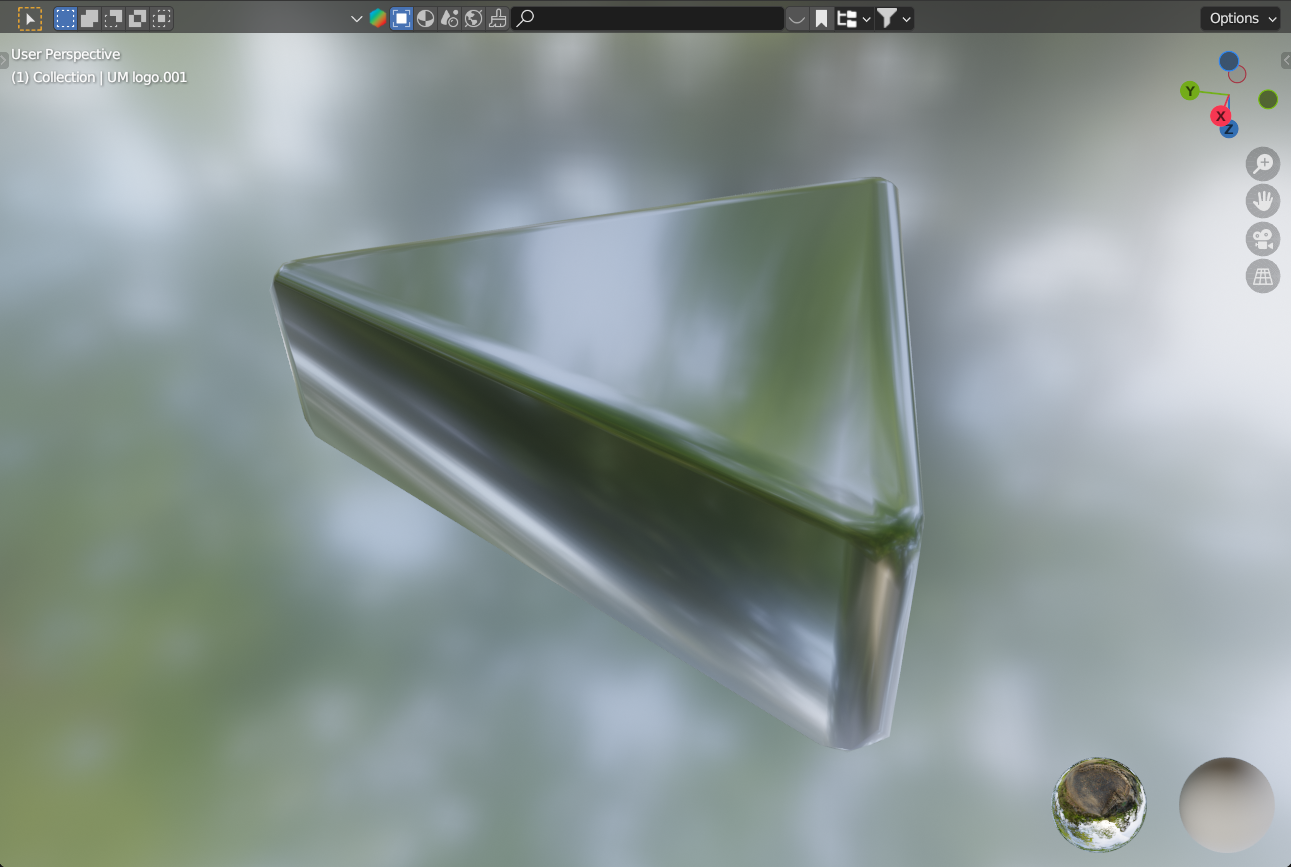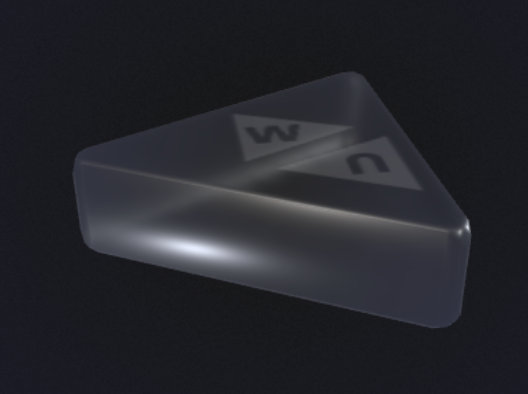
Glass is a complex material, both visually and technically. In the physical world, its appearance is shaped by how it bends and reflects light, scatters shadows, and interacts with its surroundings. Reproducing this digitally requires advanced rendering techniques that simulate refraction, surface roughness, and light behavior, all of which can be demanding for real-time platforms like Voyager.
Blender allows for the creation of realistic glass materials using detailed shader setups.

Creating the Glass Texture in Blender Using Shading Nodes
However, not all of these translate well to web-based environments. Platforms like Voyager prioritize speed and performance, which means simplifying how textures and light are rendered. Features such as ray tracing or subsurface scattering, which are often essential for convincing glass, are not supported. As a result, what looks realistic in Blender may behave very differently once uploaded. The glass texture of this model in Voyager was the closest I could get to replicating the real material.

Glass Texture in Blender

Glass Texture in Voyager